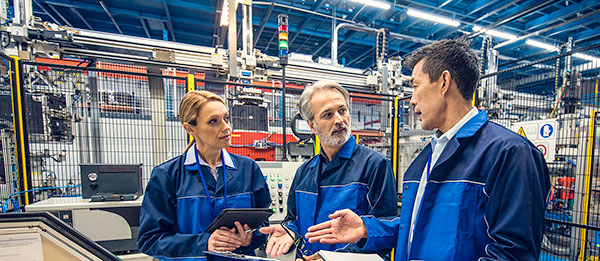Factory leaders can recover 10-20% trapped productivity by simply walking the shop floor, observing and interacting with staff.
Manufacturing has become volatile with labor shortages and regular supply chain issues hindering productivity. While improving efficiency can minimize the impact of these roadblocks, many leaders struggle to nail down specific, effective action items.
Too often leaders don’t (or won’t) go out into the plant and walk the shop floor, but a boots-on-the-ground approach to manufacturing leadership will reveal these setbacks – and is necessary to stay competitive.
Trapped productivity typically takes two forms. The first is event/circumstance-driven loss. These are the urgent, in-our-face issues that demand immediate response: machine breakdowns, part shortages, etc. They’re easy to see, and relatively easy to address.
Then there’s the hidden form: run-rate loss or leakage. These issues are much harder to detect, quantify and rectify. They’re the small things, like lack of a good standard of work, micro stops on equipment, work area layout or bad organization.
Most manufacturers accept these events as normal, but the cumulative effect is detrimental: eventually, it saps the life out of your performance. While companies turn to analytics and AI to signal leaks, the data can only go so far. It’s only possible to find out why a roadblock is occurring by investigating at the point of work.
I’ve seen this manifest firsthand. In one instance, a pet treat manufacturer was trying to troubleshoot variations in packaging—bags were underfilled or not filled at all. Once investigating the floor, we learned that only certain shaped treats would bounce off bags and onto the floor. Even with the most elaborate analytics systems, leaders at all levels need to interact with supervisors and operators to get a better understanding of what’s really going on. Shop presence can help leaders:

Here are five tips for an effective boots-on-the ground leadership strategy.
Being a boots-on-the-ground leader is essential for optimizing productivity, operational excellence and staff engagement. But leaders also shouldn’t overthink it. There’s no need for a script or formal agenda. Just show up and observe. I guarantee you’ll be surprised by the revelations that come to light.

About the Author:
Bill Remy is CEO of TBM Consulting Group, Inc. A senior executive with over 30 years of leadership experience in business management and manufacturing operations. His areas of expertise include operational performance improvement through LeanSigma deployment in manufacturing operations, supply chain, product development and project management. He has experience in broad phases of business leadership across various industries including aerospace and defense, railway, industrial and agricultural equipment, technology and process automation.
In this episode, I sat down with Beejan Giga, Director | Partner and Caleb Emerson, Senior Results Manager at Carpedia International. We discussed the insights behind their recent Industry Today article, “Thinking Three Moves Ahead” and together we explored how manufacturers can plan more strategically, align with their suppliers, and build the operational discipline needed to support intentional, sustainable growth. It was a conversation packed with practical perspectives on navigating a fast-changing industry landscape.